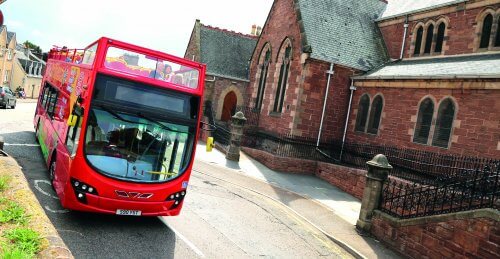
Returning to visit D&E Coaches, Jonathan Welch looks at the company’s City Sightseeing routes and local tours programme
It doesn’t seem like long since I was last in Inverness to see Donald Mathieson at D&E Coaches, but there have been a number of developments since my last visit, not to mention the effects of the pandemic, so I called in to see how the firm has changed and evolved since my previous visit. I first spoke to Donald along with daughters Gayle and Amy to find out more about the tours, before taking a trip on both City Sightseeing tours to see the UK’s northern-most city myself through the eyes of a tourist.
For the 2021 season, D&E Coaches branched out to offer its own programme of day and evening tours of the local area in addition to its City Sightseeing operation and regular schools, private hire, contract and Citylink work. Under the D&E Tours brand, the firm offers trips around Loch Ness and an Outlander Experience as well as evening photographic tours giving photographers chance to visit some scenic spots with the benefit of a local guide, and all bookable through its website.
[…]
By subscribing you will benefit from:
- Operator & Supplier Profiles
- Face-to-Face Interviews
- Lastest News
- Test Drives and Reviews
- Legal Updates
- Route Focus
- Industry Insider Opinions
- Passenger Perspective
- Vehicle Launches
- and much more!


